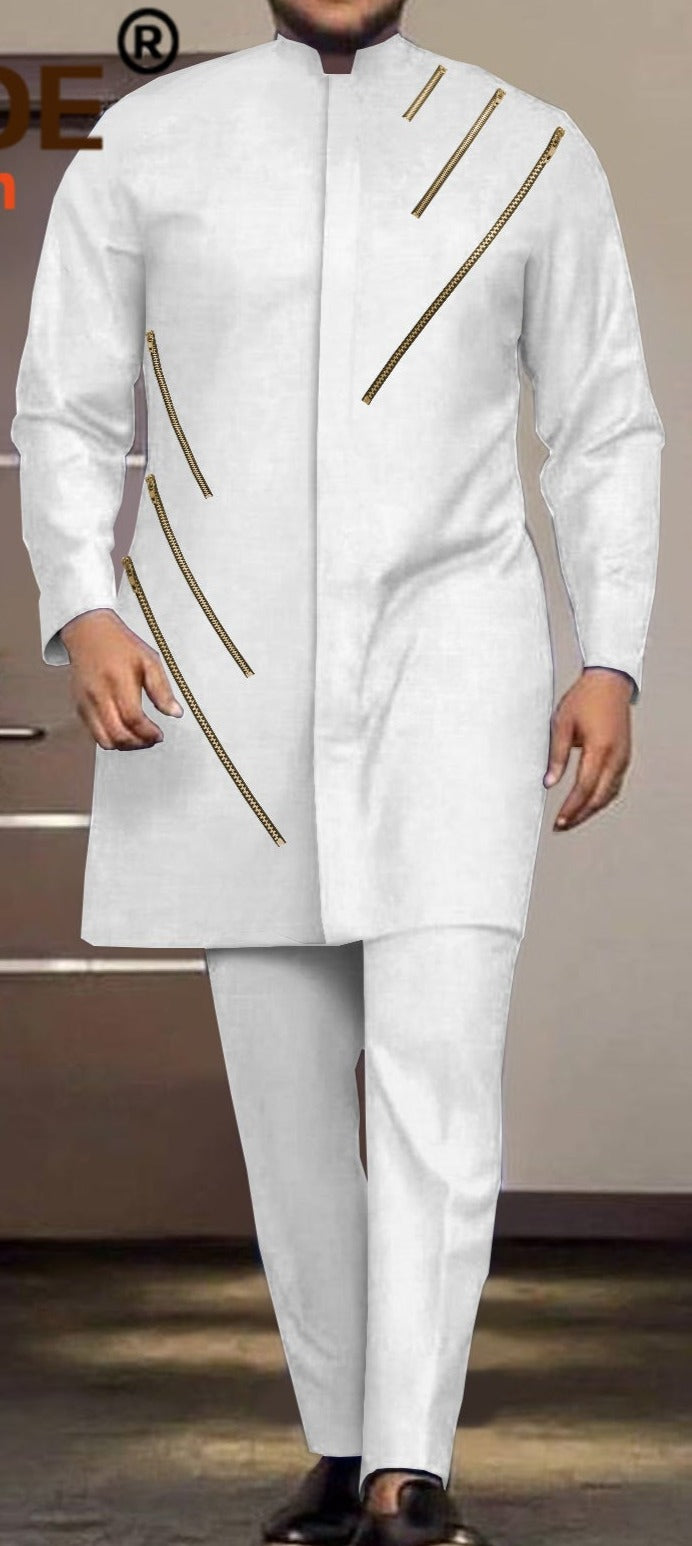African clothing and Style
Africa has a rich cultural heritage that is reflected in its clothing. It is known for beautiful print designs, vibrant colours, and bold designs. The colours give it a festive feel, and the style is sleek and elegant. If you have ever been to any traditional African event, one of the first things you will notice is the elegant and bright display of traditional African clothing. This often adds color and elegance to the already often energetic scenes.
What is Traditional African Clothing made of?
Fabrics for making traditional African clothing vary from one region to another. For instance, while Sahelian Africans prefer cotton Boubous, Northern Africans naturally make theirs of silk. African clothes are products of mostly silk, cotton, and chiffon material. Sometimes, the preferred fabric boils down to what is readily available in each region.
Traditional African Clothing and their Origin.
KENTE
Kente is unisex traditional African clothing that finds its history among the Ashanti and Ewe people of Ghana. It is made out of cloth strips of silk and/or cotton, designed to fit the cloth’s patterns.
IRO ATI BUBA
Iro and Buba (popularly called Iro ati Buba) are native to Yoruba women of Nigeria. The original version of the dress features five pieces. There is the Iro, a large wrapper tied to fit around the waist. Buba is a loose blouse worn on the upper part of the body. Gele is a head tie which Nigerian women are globally famous for. The Pele is a short fabric tied on top of the Iro around the waist.
BOUBOU
The boubou is the classic Senegalese robe, worn by both men and women all over West Africa and in West African diasporic communities of Europe and the United States. Sewn from a single piece of fabric, the boubou is usually 59 inches (150 cm) wide and of varying lengths
KANZU
The kanzu spread from the Baganda people to other ethnicities and is a national costume of Baganda men. (The Republic of Uganda has no pan-national costume for men as in neighboring Tanzania). It is a variation of the Arabic thobe. Originally, the kanzu was made from barkcloth.
HABESHA KEMIS
Habesha kemis is the traditional attire of Habesha women. The ankle length dress is usually worn by Ethiopian and Eritrean women at formal events, holidays and invitations. But it comes in many forms nowadays. It is made of cotton fabric, and typically comes in white, grey or beige shades. Many women also wrap a shawl called a netela around the formal dress.
DJELLABA
The djellaba or jillaba also written gallabea, is a long, loose-fitting unisex outer robe with full sleeves that is worn in the Maghreb region of North Africa.
In central and eastern Algeria it is called qeššaba or qeššabiya. The mountain dwellers of Morocco call it tadjellabit, which is a Berberized form.
SHUKA
Often red with black stripes, shuka cloth is often known as the 'African blanket' and is worn by the Maasai people of East Africa. The Maasai are a semi-nomadic group of people from East Africa who are known for their unique way of life, as well as their cultural traditions and customs
DASHIKI
Dashiki – 'dan-ciki' or 'dan-shiki', meaning shirt – is derived from the Hausa and Yoruba languages respectively, spoken by groups of people majorly found in Nigeria. Traditionally, dashiki is a loose-fitting garment with a V-neckline which is often embroidered and mainly worn by men.
Traditional African clothing represents one of—if not the biggest—symbols of the continent’s rich cultural heritage and diversity. Across the continent, different ethnic groups have their identifying traditional African clothing.
They mostly wear these clothes for special occasions, traditional festivals, and special events. However, some creative designers are now combining traditional African clothing with other materials to make unique designs. Thus, some hitherto traditional African clothes are becoming every day wear.
Many countries in Africa have regional unique ways of dressing. These styles are known to be the products of long-lasting textile craft in weaving (hand weaving), dyeing, and printing. This is because African traditional clothing is diverse and differs from country to country.
Overtime, the westernised style of dressing has all been incorporated into African traditional clothing. Yet, Africans have retained dressings that speak of ancient cultural traditions, heritage, and pride.




